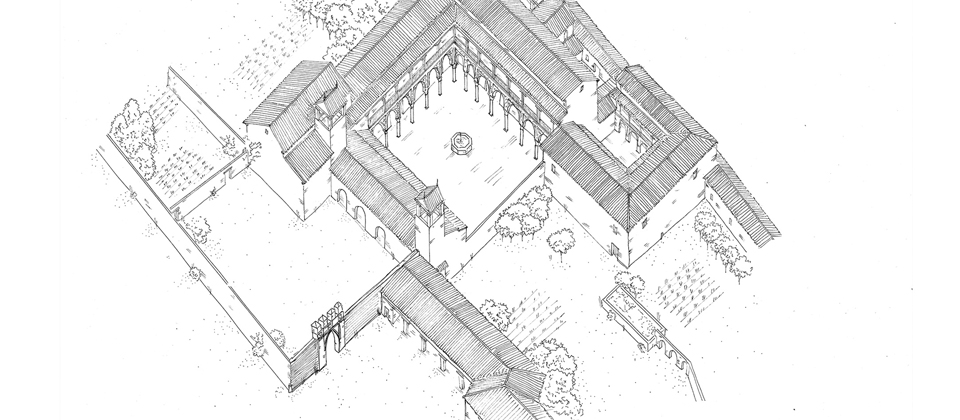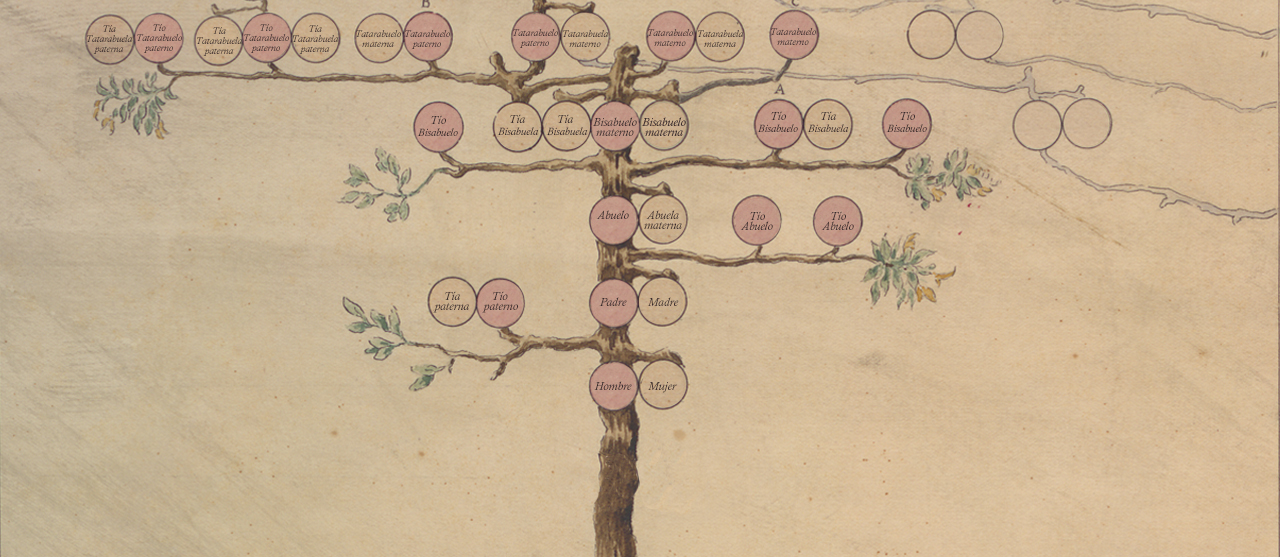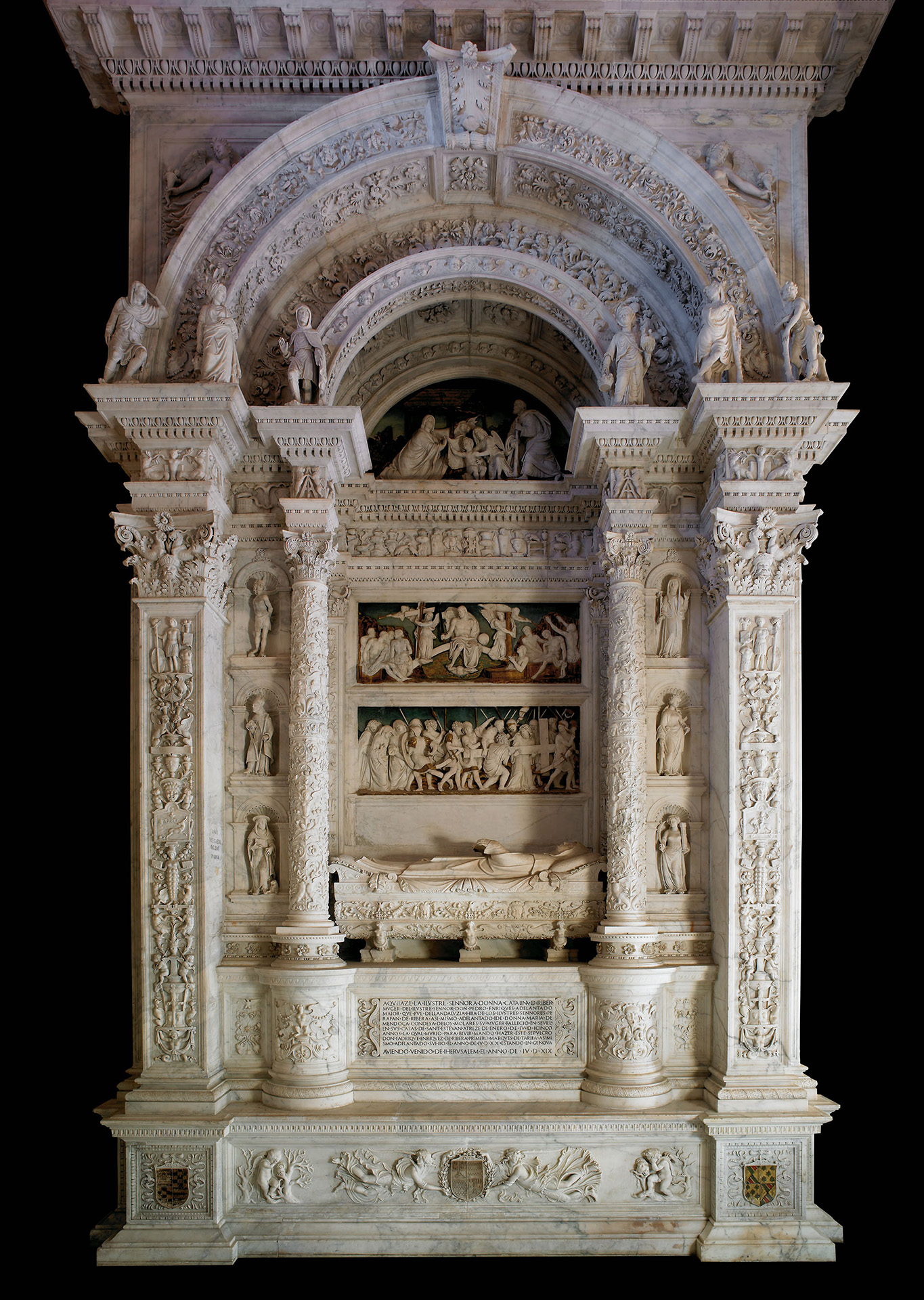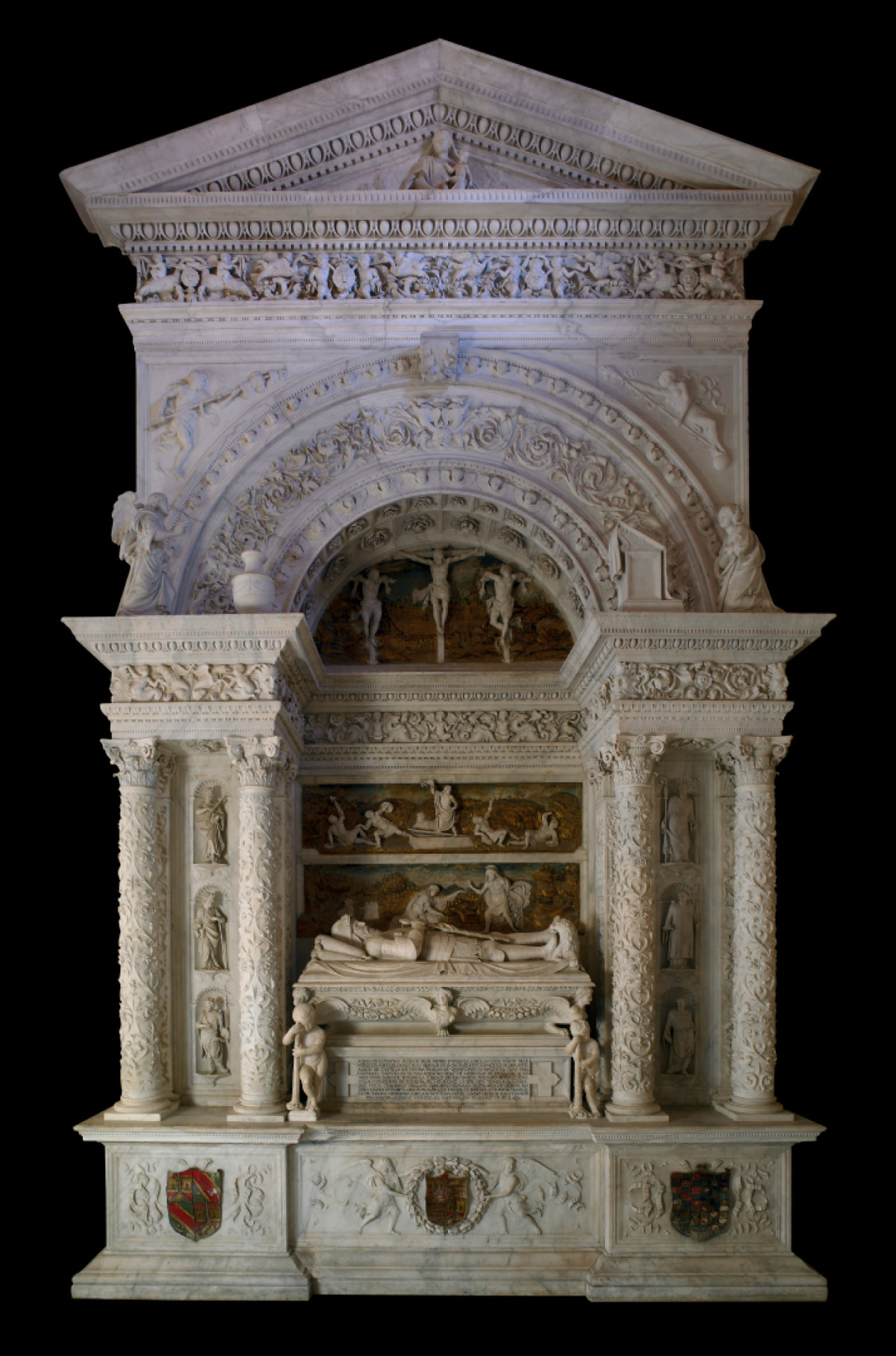The Adelantados Mayores de Andalucía (The Elder Adelantados of Andalusia)
Pedro Enríquez de Quiñones (ca. 1435-1492)
Catalina de Ribera y Mendoza (ca. 1447-1505)
The Ribera lineage, which came from Galicia, had settled in Seville at the beginning of the 14th century, although it was not until the end of that century that it began an accelerated social ascent which it owes to Per Afán de Ribera, El Viejo, named Adelantado Mayor de Andalucía in 1396, and whom his descendants considered to be the founder of the lineage. Throughout the 15th century, the social and economic promotion of the Ribera family was based fundamentally on the possession and defence of various lordships on the border with the Kingdom of Granada.
The Pedro Enríquez's two wives, Beatriz and Catalina, were daughters of María de Mendoza, Countess of Los Molares, and of the III Adelantado Mayor de Andalucía, the second Per Afan de Ribera.who died in 1454, leaving his widow in charge of four minor daughters. Doña María, with the help of her father, the Marquis of Santillana, and her brothers, was able to defend the rights of her daughters with great intelligence, and managed to marry them off to members of the high nobility. reserve the Adelantamiento Mayor de Andalucía for whoever marries his first-born daughterThis marriage has a political appeal of the highest order.
For his part, Don Pedro Enriquezwho was born around 1435, was the second son of the Admiral of Castile and belonged to a lineage born of the Royal House of CastileHe was the descendant of the twin brother of King Henry II. He was related to the reigning houses of Castile and Aragon, as the great-great-grandson of King Alfonso XI and uncle of Ferdinand the Catholic. Shortly after his marriage to Beatriz de Ribera in 1460, he became Adelantado Mayor of Andalusia, and devoted himself to intense political activity in Andalusia. He was assisted in this by his brother-in-law, the Duke of Medina Sidonia, and by the strong support of his nephews, the Catholic Monarchs, whom he accompanied permanently in the conquest of the kingdom of Granada.
The new Don Pedro's marriage to Catalina de RiberaThe contract, contracted around 1475, thus signified the second union of the lineages of Enriquez and Ribera. The existence of offspring from the first marriage implied, in turn, the the need to establish the hallmarks of a new lineage which was expected to break away from the main trunk. The main signs of identity of a lineage were its main house and its burial place. In order to satisfy the first need, the couple acquired In the early 1480s, a group of houses that are the germ of today's Casa de Pilatos, and for the second, in 1490reached an agreement with the Prior of the Carthusian Monastery of the Caves so that their descendants could be buried in one of the most sumptuous buildings of the monastery, the Chapter Chapel.
Don Pedro occupied in the War of Granadawhere he commanded a contingent of six thousand labourers and five hundred knights, and died on his return from there in 1492, it must be considered that it was his wife, doña Catherine of Riberawho survived her by thirteen years, the true architect of this palace. Catalina de Ribera was the granddaughter, through her mother, the Countess of Los Molares, of the I Marquis of Santillanaone of the most influential nobles in the politics of his time, a great poet and patron of the arts who was also able to instil in his descendants the values of humanism and the socio-political significance that the artistic patronage had as a source of recognition and social distinction. It is not in vain that the main architectural works carried out in Spain from the mid-15th century to the beginning of the 16th century are linked to his sons and grandsons.
The prominence of women is a constant in the history of the House of Ribera (Ladero Quesada, 1984, p. 452) and Catalina is probably the best example. Orphaned from a very early age, as we have seen, Catalina had to be educated solely by his motherMaría de Mendoza, who must have instilled in him the Renaissance virtue of magnificence, whose architectural practice produced sumptuous dwellings for life and death that would reflect the quality of their inhabitants, a concern that is reflected in his testament, in which he exhorts his children with these words: "...".Please remember the good lineage from which you come". The books, jewellery and works of art recorded in her post-mortem inventory reveal a culture that was beyond the reach of many women of the time and which propelled her towards a artistic patronage that went far beyond the confines of his palace.The current Casa de Pilatos, as well as works that have disappeared today, he also built the palace of Las Dueñas He left testamentary mandates for the construction of a hospital, which, in the hands of his descendants, would end up being the Hospital de las Cinco Llagas, the current seat of the Parliament of Andalusia.




